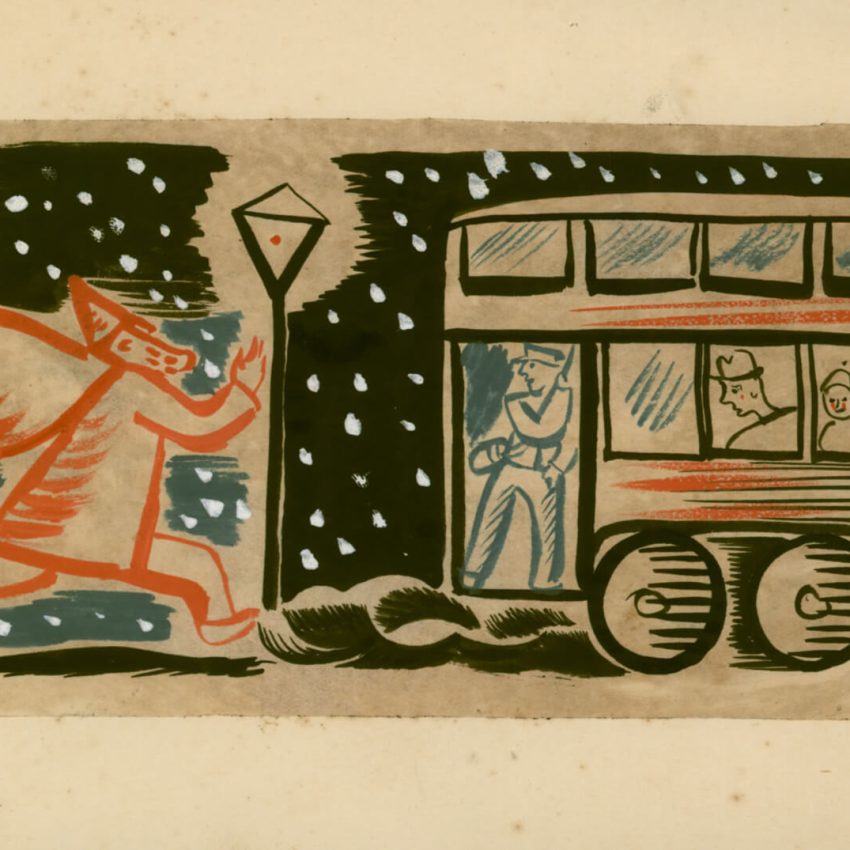
Richards was born in 1903 in the village of Dunvant, In 1921, at the age of 18, he enrolled full-time at the Swansea College of Art, then under the direction of William Grant Murray. During his time at the College he spent less time in painting than in drawing from classical casts and studying industrial design and graphics. The strongest impact on him during these years appears to have been the week’s summer school in 1923, which he spent under the direction of Hugh Blaker at Gregynog Hall, the country house of Gwendoline and Margaret Davies, where he first saw the canvases of Renoir, Van Gogh, Monet, C zanne, Corot and Daumier, the sculpture of Rodin and sheets of old-master and modern drawings. The experience confirmed him in his vocation; and in the same year he applied for, and won, a scholarship to study in London at the Royal College of Art.
Richards entered the Royal College of Art in 1924.
Afterwards Richards spent most of his life in London, apart from a period teaching art in Cardiff.
In 1929 he married Frances Clayton, a fellow artist. His work gradually moved towards surrealism after exposure to the work of Picasso and Kandinsky. He was also a talented musician, and music is a theme for much of his artwork. From 1959 onwards, he made prints for the Curwen Press. One of the high points of his career was the Venice Biennale of 1962, where he was a prizewinner. Richards died in London on 9 November 1971.
Many of his works are in the Tate Britain collection. The Glynn Vivian Art Gallery in Swansea also holds a collection (where Richards’ first solo exhibition took place in 1930). Good examples of his work are also to be found in the gallery of the National Museum Cardiff and the Pallant House Gallery, Chichester.
He designed stained glass windows for Derby Cathedral (1964-5), and for the Blessed Sacrament Chapel of Liverpool Metropolitan Cathedral (1965)
+ Follow works by this artist
+ Share Artist

Richards was born in 1903 in the village of Dunvant, In 1921, at the age of 18, he enrolled full-time at the Swansea College of Art, then under the direction of William Grant Murray. During his time at the College he spent less time in painting than in drawing from classical casts and studying industrial design and graphics. The strongest impact on him during these years appears to have been the week’s summer school in 1923, which he spent under the direction of Hugh Blaker at Gregynog Hall, the country house of Gwendoline and Margaret Davies, where he first saw the canvases of Renoir, Van Gogh, Monet, C zanne, Corot and Daumier, the sculpture of Rodin and sheets of old-master and modern drawings. The experience confirmed him in his vocation; and in the same year he applied for, and won, a scholarship to study in London at the Royal College of Art.
Richards entered the Royal College of Art in 1924.
Afterwards Richards spent most of his life in London, apart from a period teaching art in Cardiff.
In 1929 he married Frances Clayton, a fellow artist. His work gradually moved towards surrealism after exposure to the work of Picasso and Kandinsky. He was also a talented musician, and music is a theme for much of his artwork. From 1959 onwards, he made prints for the Curwen Press. One of the high points of his career was the Venice Biennale of 1962, where he was a prizewinner. Richards died in London on 9 November 1971.
Many of his works are in the Tate Britain collection. The Glynn Vivian Art Gallery in Swansea also holds a collection (where Richards’ first solo exhibition took place in 1930). Good examples of his work are also to be found in the gallery of the National Museum Cardiff and the Pallant House Gallery, Chichester.
He designed stained glass windows for Derby Cathedral (1964-5), and for the Blessed Sacrament Chapel of Liverpool Metropolitan Cathedral (1965)
+ Follow works by this artist
+ Share Artist